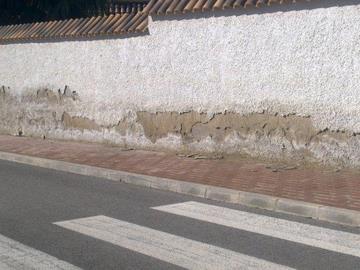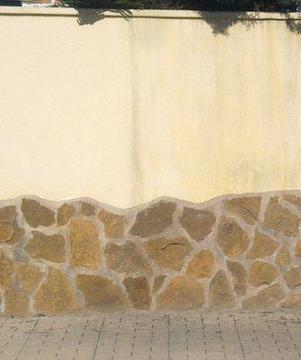- Region
- Águilas
- Alhama de Murcia
- Jumilla
- Lorca
- Los Alcázares
- Mazarrón
- San Javier
-
ALL AREAS & TOWNS
- AREAS
- SOUTH WEST
- MAR MENOR
- MURCIA CITY & CENTRAL
- NORTH & NORTH WEST
- TOWNS
- Abanilla
- Abarán
- Aguilas
- Alamillo
- Alcantarilla
- Aledo
- Alhama de Murcia
- Archena
- Balsicas
- Blanca
- Bolnuevo
- Bullas
- Cañadas del Romero
- Cabo de Palos
- Calasparra
- Camping Bolnuevo
- Campo De Ricote
- Camposol
- Canada De La Lena
- Caravaca de la Cruz
- Cartagena
- Cehegin
- Ceuti
- Cieza
- Condado de Alhama
- Corvera
- Costa Cálida
- Cuevas De Almanzora
- Cuevas de Reyllo
- El Carmoli
- El Mojon
- El Molino (Puerto Lumbreras)
- El Pareton / Cantareros
- El Raso
- El Valle Golf Resort
- Fortuna
- Fuente Alamo
- Hacienda del Alamo Golf Resort
- Hacienda Riquelme Golf Resort
- Isla Plana
- Islas Menores & Mar de Cristal
- Jumilla
- La Azohia
- La Charca
- La Manga Club
- La Manga del Mar Menor
- La Pinilla
- La Puebla
- La Torre
- La Torre Golf Resort
- La Unión
- Las Palas
- Las Ramblas
- Las Ramblas Golf
- Las Torres de Cotillas
- Leiva
- Librilla
- Lo Pagan
- Lo Santiago
- Lorca
- Lorquí
- Los Alcázares
- Los Balcones
- Los Belones
- Los Canovas
- Los Nietos
- Los Perez (Tallante)
- Los Urrutias
- Los Ventorrillos
- Mar De Cristal
- Mar Menor
- Mar Menor Golf Resort
- Mazarrón
- Mazarrón Country Club
- Molina de Segura
- Moratalla
- Mula
- Murcia City
- Murcia Property
- Pareton
- Peraleja Golf Resort
- Perin
- Pilar de la Horadada
- Pinar de Campoverde
- Pinoso
- Playa Honda
- Playa Honda / Playa Paraíso
- Pliego
- Portmán
- Pozo Estrecho
- Puerto de Mazarrón
- Puerto Lumbreras
- Puntas De Calnegre
- Region of Murcia
- Ricote
- Roda
- Roldan
- Roldan and Lo Ferro
- San Javier
- San Pedro del Pinatar
- Santiago de la Ribera
- Sierra Espuña
- Sucina
- Tallante
- Terrazas de la Torre Golf Resort
- Torre Pacheco
- Totana
- What's On Weekly Bulletin
- Yecla


- EDITIONS:
 Spanish News Today
Spanish News Today
 Alicante Today
Alicante Today
 Andalucia Today
Andalucia Today
Gardening in Spain, Hard Landscaping- Why does all the coating keep falling off the walls?
One of the most important parts of creating a manageable garden with low ongoing maintenance and minimal water use is hard landscaping.
 For many residents living on urbanizations walls are the first stage, but as with all things we have to battle with out here, they can be one of the biggest causes of frustration.
For many residents living on urbanizations walls are the first stage, but as with all things we have to battle with out here, they can be one of the biggest causes of frustration.
It's disheartening to say the least to see a newly constructed and re-painted wall blowing, staining and cracking, so may years ago we asked local builder Mark in Camposol to explain just what is going wrong with them.
 Cracking
Cracking
There are several reasons why walls crack, but usually it's because there are inadequate foundations and the walls sink and settle, causing cracking. Camposol is the same as many other urbanizations in that the builders have put in shallow foundations, and, to save money, have not used any steel caging in the footings, so the walls sink and twist, causing the cracking. Theyve also done what many other builders do and used the cheapest type of concrete for wall footings, with a mix richer in sand, skimping on the concrete in the mix. This does not have the strength for a good footing.
This is also a problem in old Spanish properties which were all built without adequate foundations, and it is very common to have a property or wall "fall off its foundations" and crack open.
Another reason many walls crack on urbanizations is that the houses and their gardens are all built on a slope. He explained that in most cases, inadequate provision has been made for drainage, so that when it rains, its a bit like filling up a wooden bowl with water, if there are no holes the level of water just rises and rises until the ground is absolutely saturated and water can only escape over the top, then it sinks into the ground and remains there for a very long time, weakening surrounding foundations and rotting plants and wooden structures..
During the major Gota Fria which occurred not long after several sectors had been built, it became apparent that no provisions for drainage had been built into the gardens, so houses at the top of the hill filled up with water, and as there was nowhere for it to get out, it eventually just poured over the top, washing down like a massive water feature into the garden below, so the ones at the bottom of the hill suffered a lot of damage.
Following that, it was necessary to cut drainage holes into the gardens to allow the water an escape route, but many gardens still have inadequate numbers of drainage holes, so water lies in the ground for a long time rather than soaking away.
This causes damp in the walls and they crack.
And finally the soil. This land was a seabed for millions of years, so the soil has a high salt level and lime content, baking to a rock -like consistency in the summer. Builders skimp - they dont want to dig down any deeper than they have to!
So whats the solution?
A deep indrawn breath, then the truth. Well, the cracks can be filled in and the wall re-rendered, but it's always going to move again with time, so the real solution is to take it down and rebuild, with proper footings and adequate drainage.
And why does the wall coating blow off in some cases and fall off in great chunks?
 Damp
Damp
Water in the ground soaks up into the blocks, gets behind the coating, which then blows. Again, the problem is caused by lack of drainage, poor foundations and cheap materials.
Without taking the whole wall down to sort out the base cause of the problems, the most cost-efficient way to deal with it is to chip off the coating up to a height at which it is solid and dry, coat the wall with a waterproof membrane, then clad with stone, bricks or tiles, using a good waterproof mix which will prevent ugly blowing. There are many ways in which this can be done to create a vast number of finishes and styles, so you can really let your imagination run wild if you want to.
 The other option is to chip the whole lot off and re-coat with a product called monocapa, which can be toughened using marble chips, and which can be applied in a vast range of colours to a large number of designs. Its versatile and durable and allows a little artistic creativity should you feel so inclined.
The other option is to chip the whole lot off and re-coat with a product called monocapa, which can be toughened using marble chips, and which can be applied in a vast range of colours to a large number of designs. Its versatile and durable and allows a little artistic creativity should you feel so inclined.
Exterior paint is better than interior, but if there's earth behind a wall the damp will cause this to happen, and unless the earth is cleared from behind this will continue to happen as the tidemark shows where the water sucked in from the earth has reached. The line is salt or lime, seeping out from the soil.
Rendering the wall with proper coloured renders, which are available in a vast range of colours will give the opportunity to put strong colours on a wall without using paint. The only disadvantage is that they will fade with the sun and can look patchy, particularly if any repairs or alterations are made.
Using "monocapa" is really a better long-term bet.
So, to summarise, it can be patched up, but will need to be patched again at some point, so don't paint it a colour that will fade and show the patches. Cladding will solve the damp problem.
Long-term, knock it down and do it properly!












































